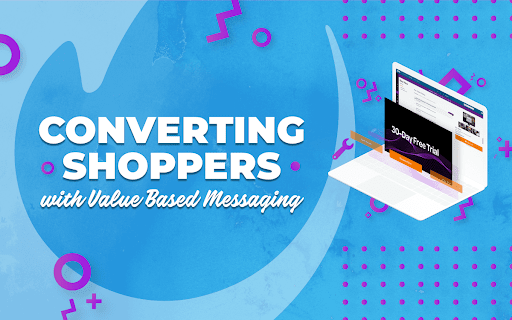Many brands utilize small incentives to give shoppers an extra push towards conversion. However, the question of how to best optimize incentives is the subject of much debate. Can targeted, value-based messaging be just as effective as a small incentive? Is there such a thing as an incentive that’s simply too small?
These are the questions UpSellit had in mind in its new Digital Download case study, which is available for download here.
Case Study Overview
To test the effectiveness of small incentives, UpSellit ran a series of A/B tests with three of its software clients. Each client offers digital products that are available for immediate consumer download.
The test divided audiences into two subsets. Afterwards, some were offered a small incentive (5% off) on abandonment. Meanwhile, others were shown re-iteration messaging designed to emphasize the value propositions presented by each piece of software.
Takeaway #1: Value-Based Messaging Had a 59% Higher Click Rate Than Small Incentives
The first finding of the study came from an analysis of campaign click rates. Although both campaigns had high click rates, the non-incentive campaign generated an extremely high click rate of 29%.
There could be a number of potential reasons that this was the case. It’s possible that abandoners were simply not inspired enough by the incentive to remain on the site.
Most software offers a variety of features, so consolidating them in an eye-catching way can actually be more helpful for shoppers than presenting an incentive.
Conclusion:
Overall, targeted messaging that captured users’ attention and spoke to their needs successfully engaged shoppers on the fence.
Takeaway #2: Value-Based Messaging Generated 18%+ More Conversions Than Small Incentives
It’s often assumed that incentivized lead capture will always be more effective than non-incentive variants. However, that was not the case in this study. The fact that targeted messaging outperformed incentivized lead capture in this study is a testament to the power of well-crafted messaging, especially in terms of finding the underlying reason for abandonment.
While price is almost always a factor when abandonment takes place, it is not always the sole reason a visitor fails to convert. The vast number of competing choices within the software market can create analysis paralysis. As a result, well-crafted messaging helps the user make a decision by succinctly summarizing the product value and highlighting its best features.
This takeaway suggests that targeted messaging can act as an effective abandonment strategy for high consideration purchases like software.
Conclusion:
A simple reiteration of the product’s benefits convinced many user to move forward with their purchase. In this case, it was less effective to lower the price than to simply explain why the product was the right choice for them.
Takeaway #3: 5% Off Incentives Were Too Negligible to Be Effective
In most cases, it’s uncommon for a non-incentive campaign to outperform an incentivized version of the same kind. However, the incentive offered in the study was quite small (5%).
Based on the results of the study, it appears that saving such a small amount is simply too negligible to optimize the effectiveness of an incentive.
Conclusion:
Incentive campaigns should take into account the overall value created by an offered incentive.
Takeaway #4: A/B Testing Allowed for Efficient Optimization
When looking at both incentive and non-incentive strategies together, the campaign had an overall conversion rate of 30% among users who interacted with the on-site engagements.
Across all variations, UpSellit produced a significant increase in conversions, with an overall 9.6% increase across desktop devices. This demonstrates a couple of points.
- Both targeted messaging and incentives effectively mitigated abandonment. However, a larger incentive may have resulted in even better results for the incentivized strategy.
- By testing two strategies UpSellit found what worked for a specific client. In the end, no solution should ever be one-size-fits-all. Rather, testing optimizing the effectiveness of each individual campaign.
Conclusion: A/B testing allows brands to test the effectiveness of campaigns at different stages and determine which those tactics most successfully converts abandoning shoppers.
Should You Choose Incentives or Value-Based Messaging?
The results of this study demonstrate that while neither incentives nor targeted messaging can serve as silver bullet, a well thought out combination of these two strategies results in a statistically significant increase in conversions.
By leveraging A/B testing, well-crafted messaging, and intelligently chosen incentives, brands can increase conversions and truly get more value from every visit.
To learn more about this study, and to find out more about optimizing incentives and targeted messaging, make sure to download the full case study.
